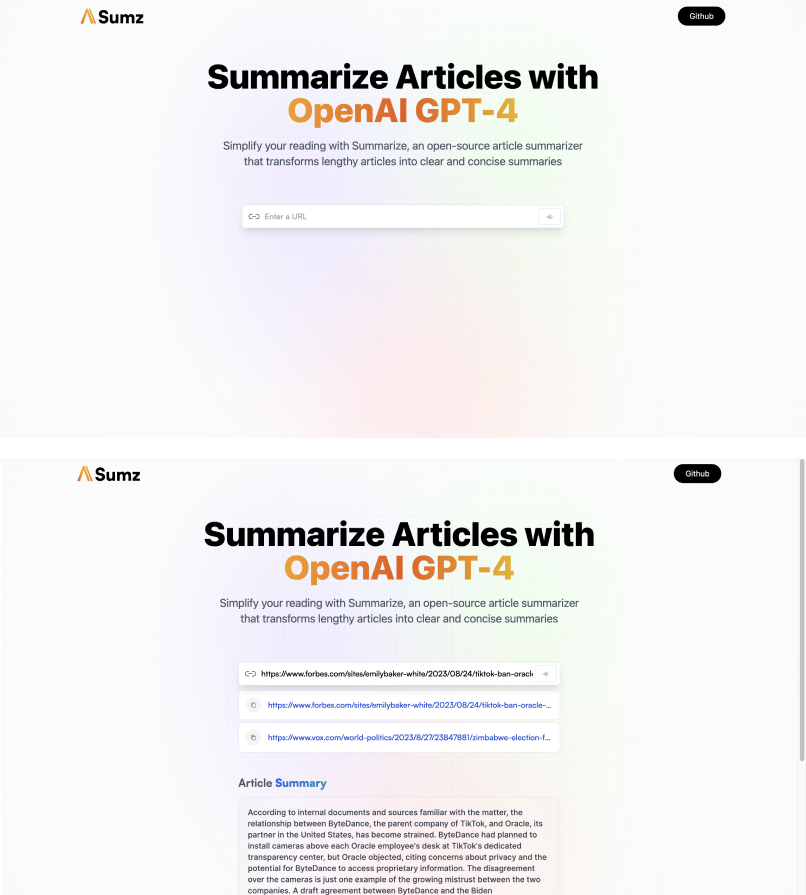Short Explanation
This application, built on the powerful OpenAI's GPT Model, transforms the way you consume content. Simply provide the URL of the article you want summarized, and AI takes care of the rest. Using advanced natural language processing, it analyzes the content, identifies key points, and condenses the article into a concise and coherent summary.

Project Goals
This application aims to develop a state-of-the-art AI application that harnesses the capabilities of OpenAI's GPT Model to provide users with efficient, accurate, and customizable summaries of articles sourced from website URLs. By focusing on user experience, output quality, and security, the application will become an indispensable tool for individuals seeking to quickly grasp the key points of lengthy written content.
Tech Stack Used
- Vite
- Tailwindcss
- RapidAPI
The backbone of this project lies in its potent combination of Vite, Tailwindcss, and RapidApi. Vite provides a fast and efficient development environment, allowing to quickly iterate on application and see changes in real time. with chosing react as frontend library, which offers a component-based approach to UI development, making it easier to manage and reuse UI elements. Tailwind CSS simplifies styling process by offering prebuilt utility classes that can directly apply to HTML elements, eliminating the need to write extensive custom CSS. RapidAPI enables application to interact with external websites' content by providing a convenient way to access the necessary data for summarization.
The Problems and How I Deal With It
Building an AI article summarization project using the Vite, React, Tailwind CSS, and RapidAPI stack can be exciting, but there are challenges that i might encounter. One of is about Integration of APIs. Integrating external APIs, such as RapidAPI for fetching article content, can be complex due to variations in API responses, authentication, and data formatting. how i deal with this challenge is Read the API documentation thoroughly to understand how to make requests, handle authentication (if required), and process the response data.